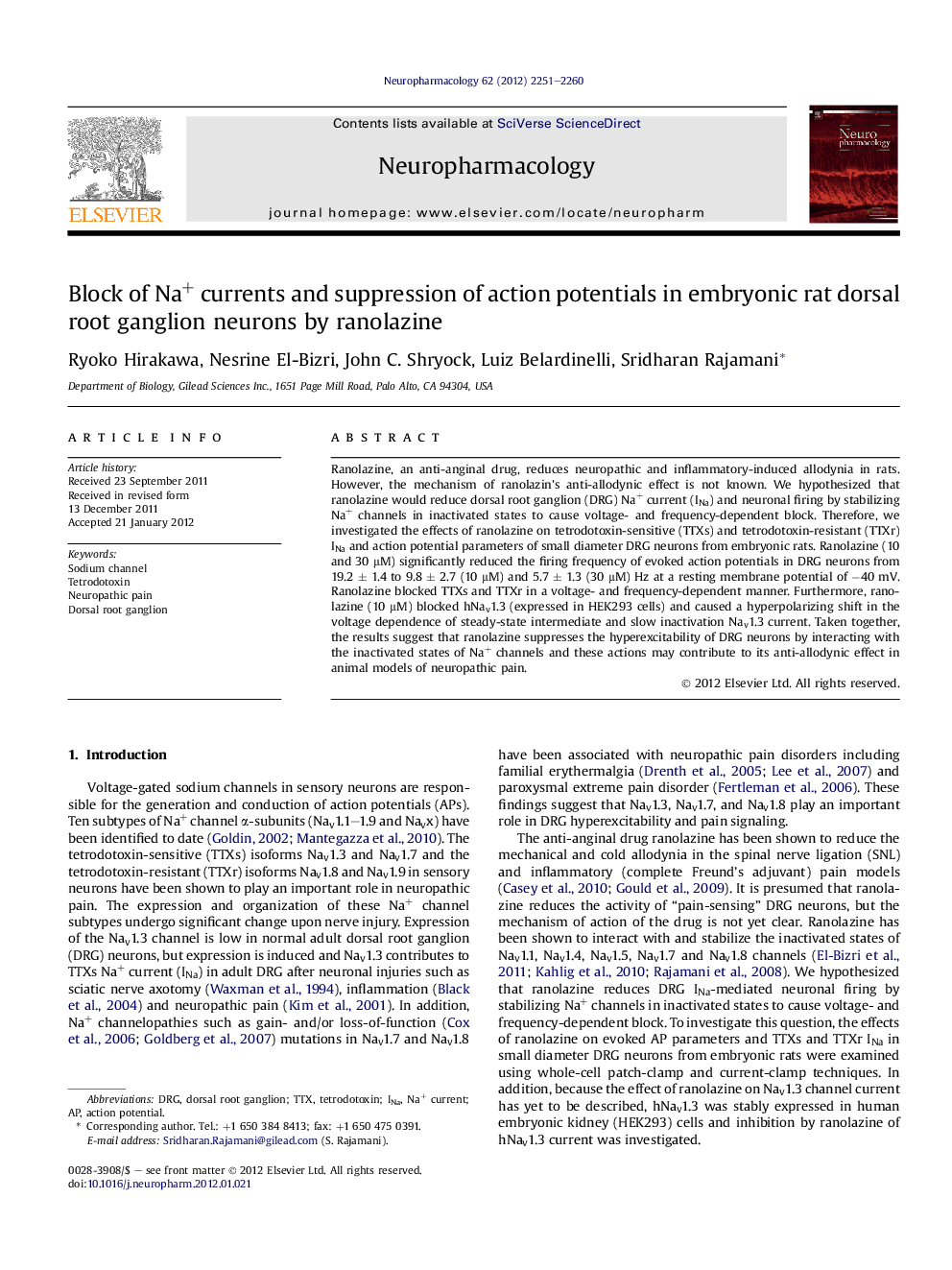| Article ID | Journal | Published Year | Pages | File Type |
|---|---|---|---|---|
| 2493515 | Neuropharmacology | 2012 | 10 Pages |
Ranolazine, an anti-anginal drug, reduces neuropathic and inflammatory-induced allodynia in rats. However, the mechanism of ranolazin's anti-allodynic effect is not known. We hypothesized that ranolazine would reduce dorsal root ganglion (DRG) Na+ current (INa) and neuronal firing by stabilizing Na+ channels in inactivated states to cause voltage- and frequency-dependent block. Therefore, we investigated the effects of ranolazine on tetrodotoxin-sensitive (TTXs) and tetrodotoxin-resistant (TTXr) INa and action potential parameters of small diameter DRG neurons from embryonic rats. Ranolazine (10 and 30 μM) significantly reduced the firing frequency of evoked action potentials in DRG neurons from 19.2 ± 1.4 to 9.8 ± 2.7 (10 μM) and 5.7 ± 1.3 (30 μM) Hz at a resting membrane potential of −40 mV. Ranolazine blocked TTXs and TTXr in a voltage- and frequency-dependent manner. Furthermore, ranolazine (10 μM) blocked hNav1.3 (expressed in HEK293 cells) and caused a hyperpolarizing shift in the voltage dependence of steady-state intermediate and slow inactivation Nav1.3 current. Taken together, the results suggest that ranolazine suppresses the hyperexcitability of DRG neurons by interacting with the inactivated states of Na+ channels and these actions may contribute to its anti-allodynic effect in animal models of neuropathic pain.
► Ranolazine suppressed DRG neuron hyperexcitability and Na+ currents. ► Ranolazine reduced Na+ currents by stabilizing inactivated states of the channel. ► These actions may contribute to its anti-allodynic effects.
